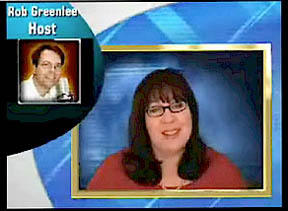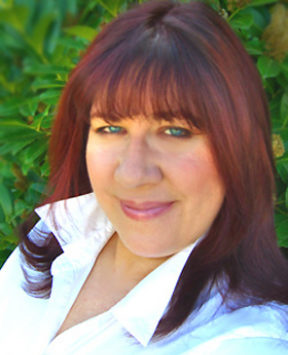If you ever wanted to put yourself in the anchor seat for a newscast or create any kind of broadcast quality video with you as the star, a Rancho Cordova, Calif. company called Serious Magic (Serious Magic.com) has created a software tool with you in mind.
Ben Yoder of Serious Magic showed me how their Visual Communicator software allows any of us to quickly create professional video presentations in a few minutes right from our own desktop.
Q: Give us an overview of what visual communicator can do.
Yoder: Visual Communicator is sort of a new category of application. It allows anyone to create professional video presentations in just minutes, even if they have never had any video experience whatsoever – something that looks like maybe it was professionally edited in the studio, but they can do it from their desktop and then e-mail those videos to anyone in the world, place it on a Website or burn it to a CD.
Q: Who are you seeing getting the most value out of this tool?
Yoder: Its across the board.We have a lot of small businesses that are now able to compete with the big businesses by creating videos for their websites and making them look like they spent thousands of dollars, but just doing it in-house.
Were also seeing the big companies use it as well because it saves them so much time and money since they don’t have to have a multimedia team. If they want to do an HR video or a press announcement, an individual person can just do it themselves without having to farm out the work.
Were also seeing a great deal of educational use. Lots of schools are buying Visual Communicator and integrating it into their classroom.
Its also used a lot as a consumer application for everything from personal video messages to somebody making a video commercial for EBay.
Q: Tell us about the interface?
Yoder: We didnt want to create another video editing package. Theres some great video editing tools out there but, in our opinion, the process is still very time-consuming and complicated for the average person. We wanted to give people a way to get the end results that look very professional but without doing those complicated editing steps.
We started with the process. We actually created a teleprompter and build it right into Visual Communicator. You start by typing what you want to create in your video and you just simply drag-and-drop graphics next to the words they go with in the script. Weve eliminated the tedious editing timeline so when people get to a specific part of the video where they want a picture or video clip to come up, they just put it right next to the words they go with. When they click Record, everything triggers instantly.
The best analogy is a TV newsroom. At point of there top story, thats when they’re video or graphics start playing and it’s all done in a sort of live timeline. Thats the way our program works – in real time. As soon as your done talking, the video is done.
Q: Can a business use the software to make a professional television commercial? Is it of that caliber?
Yoder: It is, in terms of the quality and the effects and the look of it. The first version is primarily meant for sharing over the Internet or Power Point or CDs. Weve just come out with the Pro version with full broadcast resolution output including print-to-tape and CD/DVD publishing. You can output is it in the 640 x 480.
Q: What type of computer and other hardware do you need to make this work well?
Yoder: First and foremost, you need a video camera or a Web cam. You position the Web cam or camcorder on top or just behind your monitor. By doing so, when reading from that teleprompter, it directs your eyes in such a way so it looks like youre looking right into the camera at a million-dollar TV station. As far as the PC hardware, we’re just looking for a Pentium III or faster computer. The Plus version of our software comes with a green screen which thumbtacks to the wall behind you. It also comes with a clip-on microphone. Were taking care of the audio and the PC side is pretty standard.
Q: If you dont have a Web cam, you can create an audio version of a newsletter, correct?
Yoder: Absolutely. Say you just got back from vacation and have your digital camera full of pictures. You can just drag-and-drop that into the interface and either record a slide show or write a script and actually narrate your slide show. Then you save that out as a movie you can e-mail to your friends and family.
Q: If you do want to go all-out, a digital camcorder is a better bet than a Web cam, right?
Yoder: Yes.Web cam have come a long way in recent years. Some of the newer Web cams in the $99 range are looking really good. A camcorder is typically better video quality than a Web cam, but either one can give you good results.
Q: If the person wanted to go to a higher level, what type of equipment would you recommend?
Yoder: Depending on your video capture card, you can plug in any kind of camera you want. For the most part, people arent having to spend a lot of money on cameras. Were seeing ranges from a $300 camcorder to a $1,000 DV camcorder. It really doesnt matter that much, primarily because were outputting on the Web. All the visuals, the graphics, the effects, the titles and a green screen really leave only the person on camera being captured on the video. Everything else is high-resolution effects. People expect to go out and spend lots of money because that’s what theyre used to when building a studio. What were saying is you can now go do this in your cubicle and no one will know the difference. It will look like you did it in a million-dollar studio.
Q: Lets talk about the streaming possibilities. What file format does it output into?
Yoder: Our software comes with a wizard that helps to build the show and then once youre done recording your show, it has a wizard that walks you through how to share your show with people on the Internet or on CD. It breaks it down so its really simple for you to choose the bandwidth.
Even in the Streaming Media Industry, the encoding side of it can still be pretty difficult. We try to make it as simple as possible without losing any of the benefits of selecting the options you want. We built in the Windows Media encoder, so the standard default if you choose to compress the video for an Internet audience, is going to save it as an .asf file. The reason for that is everybody has a Windows Media player so they don’t have to download anything special, even if you’re on a Macintosh. If you want to encode it in something different such as QuickTime or Real Player or any of these other codecs out there, you can save it as an uncompressed .avi file, which is a standard video format. From there you can take it into any encoder you already have and encode in any way you want. You can also download a free software update that allows you to use an encoder that’s already installed on your machine.
In the streaming world there is a lot of great technology that is helping to increase both audio and video streaming. What hasnt been addressed in our minds is the content creation part of that, which is always the hardest part. Its easy to repurpose content and encode it and put it on the Internet. Its another thing to say you’re going to create new content, especially on a frequent basis, without spending thousands and thousands of dollars and a lot of time and resources.
Visual communicator solves that problem because you can create a lot more content a lot easier and quicker right from your desktop about having to go rent or set up the studio. Our main concern is solving the content process and making it possible for virtually anyone to do it instead of just the video editing professionals, the IT department or the multimedia department.
The full audio interview with Ben Yoder can be heard at www.webtalkguys.com where you can also watch a video production created by this columnist.
Dana Greenlee is a web designer and co-host of the WebTalkGuys Radio Show, a Tacoma-based talk show featuring technology news and interviews on KLAY 1180 AM.







